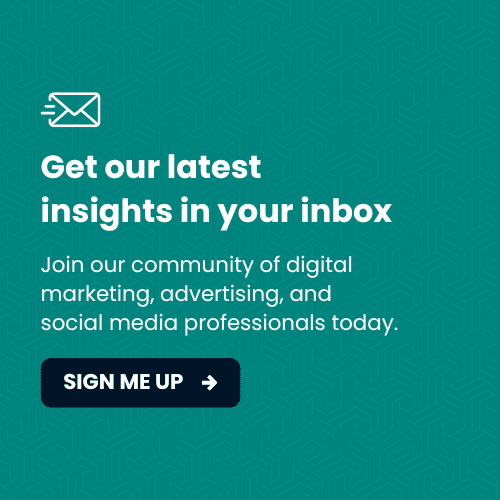The world of pay-per-click (also known as PPC) advertising can be overwhelming because you have so many options when it comes to where you want to advertise. However, we typically recommend our clients advertise on at least Google or Facebook because of their sheer volume of users.
It begs the question:
How do you figure out where to allocate your digital advertising funds? With billions of searches a day on Google and billions of users on Facebook, where do you start?
First: Why Google and Facebook Ads Still Matter
Regardless of the media’s attempt to take on the Google and Facebook “duopoly,” the truth is that these two platforms are still dominant (by a long shot) when it comes to PPC advertising. They control an overwhelming percentage of the U.S. digital ad market. Even though they may be losing a bit of ground to Amazon, the two giants are still at the top of their game and aren’t going anywhere anytime soon.
According to eMarketer:
- Google and Facebook combined will own 52.8% of the U.S. advertising market this year.
- Despite the growth of Amazon, their ad business will take up an estimated 9.5% of the market – a far cry away from the numbers Google and Facebook are seeing.
- Jason Kint, CEO of Digital Content Next, the trade group representing premium publishers, expects Facebook and Google to bring in 88% of all new digital ad dollar growth this year.
Second: How Facebook Ads and Google Ads Complement Each Other
Once you’ve decided that Facebook and Google ads are right for your business, it comes time to strike that balance of where your funds will go between the two platforms. However, the first real step to success is understanding how the two platforms are different in terms of users, functionality, and the insights they can offer.
Facebook Ads Focus on Customers Still at the Top of Your Sales Funnel
The way that paid social works on Facebook is a business will pay a certain amount of money to display an advertisement to a selected group of users based on their demographic information. Companies can choose who they want their advertising to reach based on their gender, age, socioeconomic status, ethnicity, location, and more.
A few things that make these ads unique:
- There is a heavy focus put on imagery and video.
- An average spend for this model is around $.97 per click.
- As discussed above, Facebook is a display network, so you’re targeting your ads based on demographics more than on the user’s actions.
- Whether they are searching for it or not, Facebook users will scroll across the ad on their feed. This ad placement will make a user aware of a product that is likely well suited for them based on their personal information. It also puts Facebook users who click your ads further at the top of your sales funnel.
- With that said, a customer is less likely to purchase something from this advertisement right off the bat, but by building this awareness, they will be more likely to search for it in the future. For this reason, Facebook is usually used more for remarketing and retargeting purposes and building out custom lookalike audiences, which you can learn more about here.
The reality is that even if you have a 10% conversion rate (which is excellent), you still have 90% of users that haven’t converted yet. This reality is a big reason why remarketing makes sense, making Facebook meaningful and vital as a part of your overall PPC advertising strategy.
Google Ads focus on Customers Closer to the Bottom of Your Sales Funnel
Google Ads are by far the most popular option for paid search advertising. Paid search focuses on text-based advertisements and keywords. And unlike Facebook, it is used primarily to drive traffic based on a user’s actions (as opposed to their demographic information).
A few things that make these ads unique:
- Google Ads rely heavily on text ads.
- The average amount to pay for a Google Ad is between $1-2.
- Placing text advertisements on Google is more likely going to result in a sale. In other words, users who click these ads are more toward the bottom of your sales funnel. This is because users are searching for a direct product so, once they click on an ad that takes them to that product, a purchase is more likely to occur.
- Because of the way Google ads work, businesses are more likely to utilize Google to drive traffic (as opposed to remarketing).
Given this information, it’s essential to understand that your ad strategy isn’t just about how much money you put towards the two platforms but how you get the two to work together (and only then do you determine how your funds are allocated).
Third: How to Create a Complimentary Google and Facebook Ads Strategy
Step 1: Look at Your Industry and Your Business Goals
If you’re starting entirely from scratch without any data to influence your decision, begin by looking at the industry you’re in, the search volume in your industry, and what you’re trying to accomplish. Then, develop a PPC advertising strategy that makes sense.
For example, a B2C company will probably have more success selling a small trinket on Facebook, whereas a B2B company will see Google as a larger driver. This is mainly because of the audiences you see on each platform. Remember, Facebook users are not as deep in your sales funnel, and a small trinket is an easier buy than something a B2B company usually offers.
Secondly, when doing this initial analysis, you need to think about search volume. For example, if you’re a niche produce on Google, you may not be able to spend 50% of your budget there because the volume is so low. It’s important to do your keyword research first to see if the volume is there and how much they will cost. Visit our Google Ads template as a resource.
In short, you never want to throw up your ads and see what sticks. Once you understand your strategy, you can start optimizing.
Step 2: Pay Close Attention to Your Cost Per Lead and Cost Per Sale
This is the big one when it comes to striking that perfect balance, and it will take time. You will want to monitor your cost per lead and cost per sale closely on both platforms to understand your audience and what’s working for you. Learn how to find and understand these metrics on both platforms here.
Step 3: Slowly Start to Move Spend Over and Monitor Your Metrics
Once you get a feel for what seems to be working (an ad here on Facebook, another ad here on Google, etc.), start to move your spend over to your successful ads and continue to monitor your cost per lead and cost per sale. Over time, you will begin to strike that perfect balance in your ad spend, which also means a perfect balance between brand recognition leading to a sale.
Step 4: Don’t Neglect Either Ad Strategy!
As you start to see one platform performing better than the other, it can be tempting to neglect the lesser-performing site. After all, why would you want to spend your time and resources on Facebook if Google is bringing in the sales?
The truth is that the data you get from one platform can help you see success on another. While you will eventually find that you spend more in one place over the other, you always want to maintain a presence on both for two main reasons:
- In case you see trends change. Whether it be the time of year or an increase in competition, things can change quickly, and you’ll only notice if you’re monitoring spend on both platforms (which is discussed further in step 5 below).
- Because those searching on Google usually have a higher-intent to purchase, you need to make sure you’re targeting the right people, and Facebook can help you do that. Google offers insights into your target audience as well, but Facebook is a better place to start because you can be more creative, they have better targeting options, and they’re usually a bit less expensive.
Step 5: Revise Your Spend Levels Every 3 Months
If you haven’t caught on by now, PPC advertising needs constant monitoring. Patterns change, trends to bid on change and even the options you have for your actual advertisements can change on a dime. This is why you will want to hire an agency or internal team member to monitor the ads spend and continue to tweak the budget to find the perfect balance.
Final Thoughts: Utilize Google Data Followed by Facebook for Optimal Business Growth
To build a solid consumer base, advertising on both platforms is necessary due to their immense size with billions of potential customers. As discussed above, ads on Google are more likely to result in a sale because users are searching for a direct product. In this sense, businesses can build their brand awareness through Facebook and then use corresponding keywords on their Facebook Ad with Google to increase the possibility of a sale once a user is ready to purchase.
The two can also work in an opposite sense by using Google Ads data in Google Analytics to strategically place Facebook Ads. They can view the information of a visitor from Google through the user’s IP address, which will provide the demographic information. Once a business determines WHO is searching for their products, they can use that data to build effective buyer personas over on Facebook.
In the end, utilizing Google or Facebook Ads separately can undoubtedly have a positive impact on a business’s success. However, including both channels in your PPC advertising campaign gives you the best opportunity to win versus your competition.



